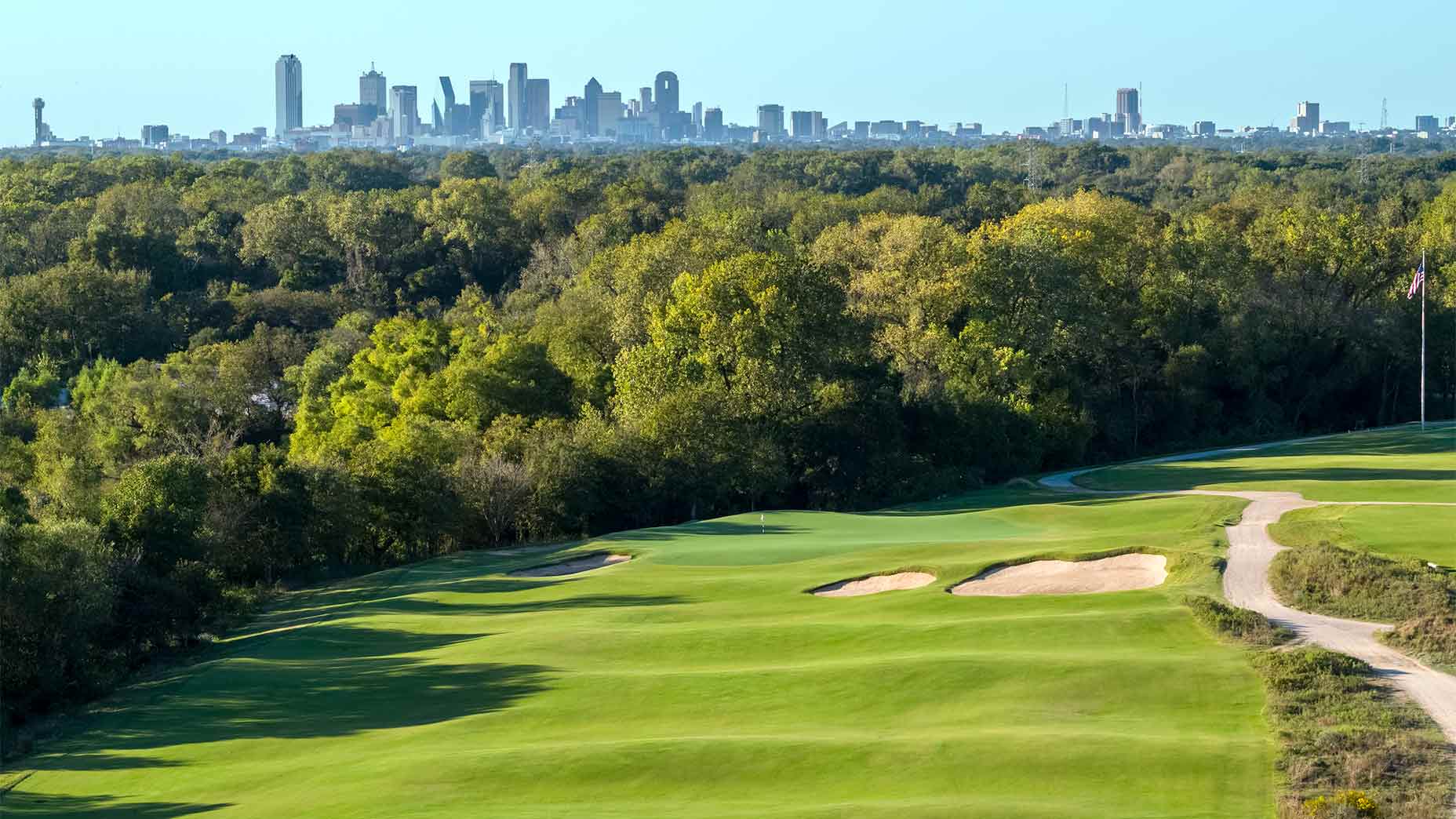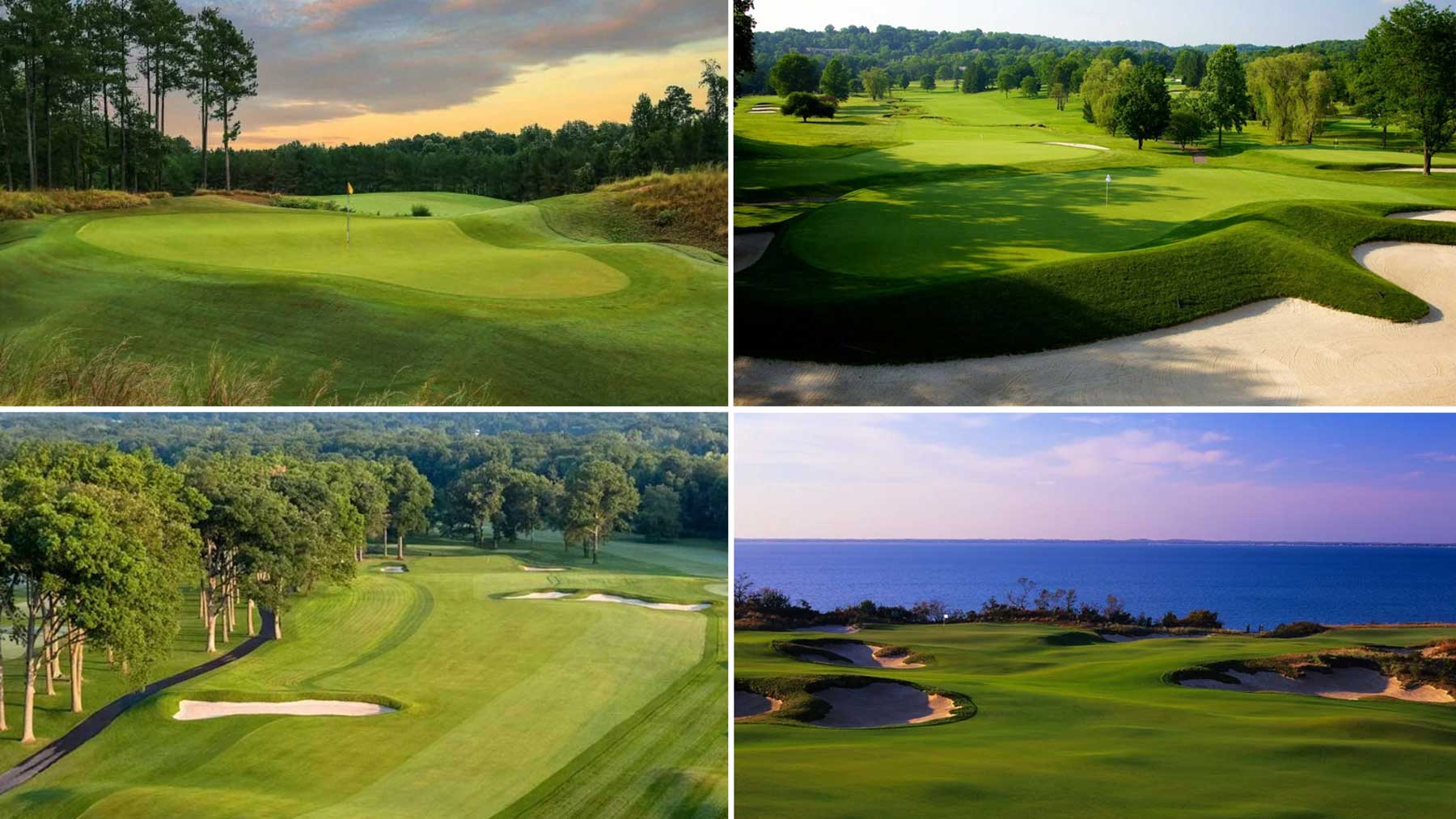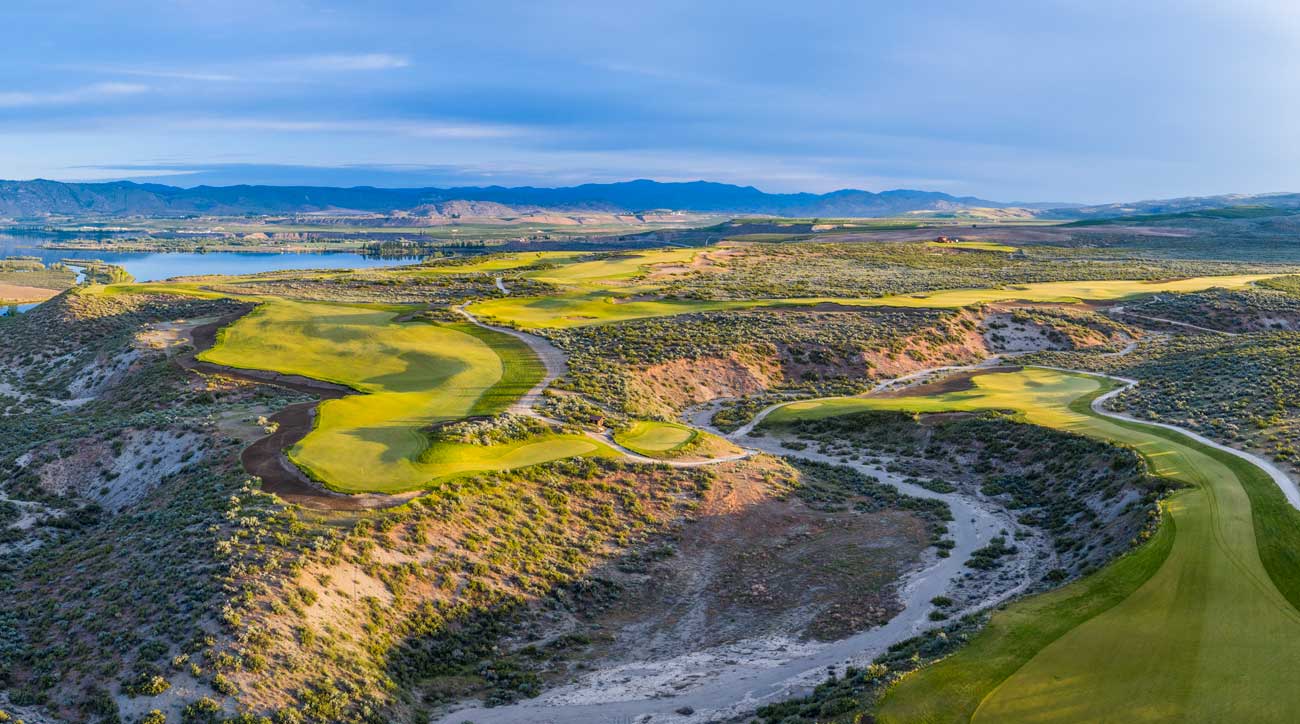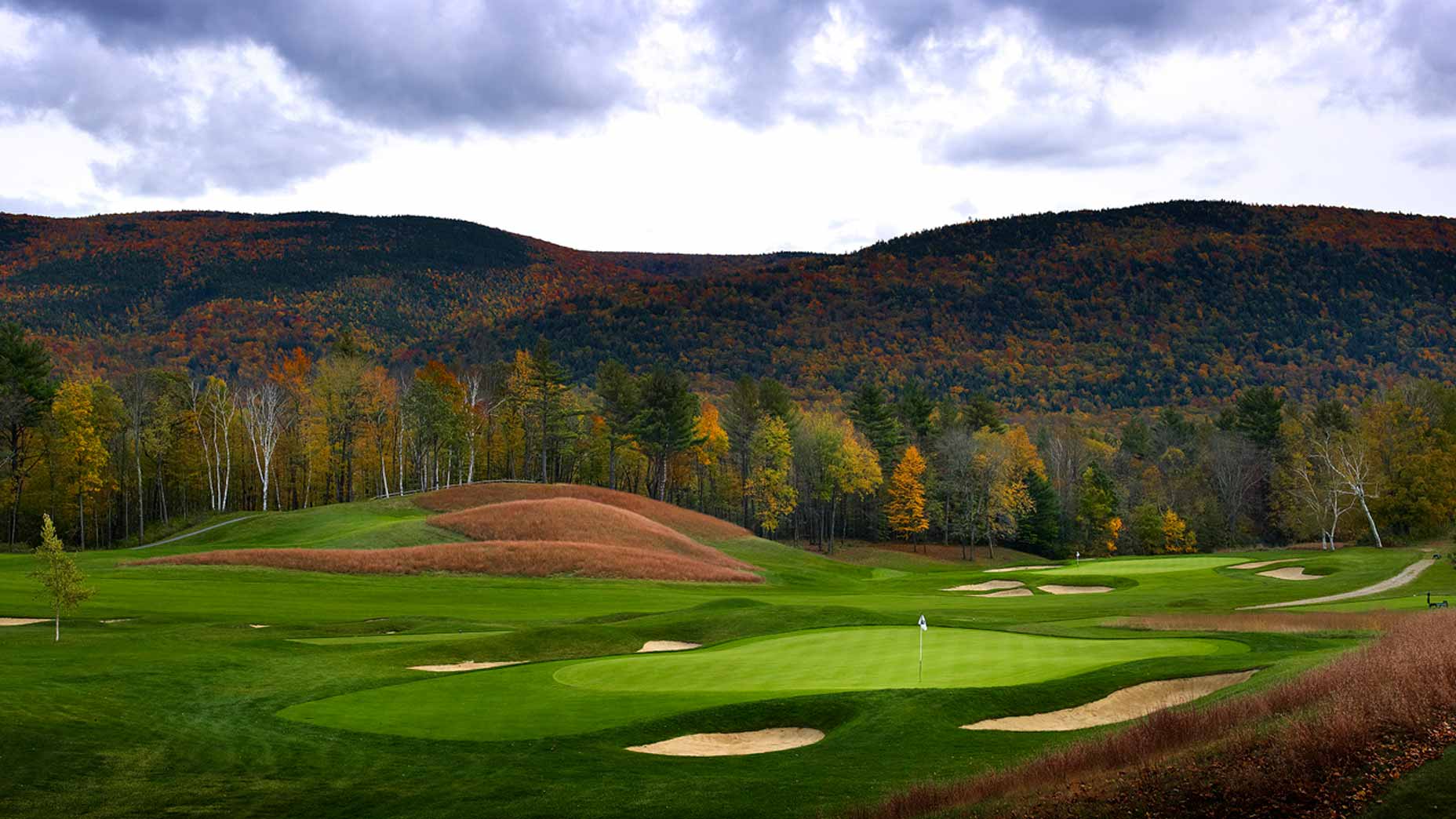It might come of little solace to those courses that just missed out on making our latest ranking of the Top 100 Courses in the U.S., but in terms of total ranking points not much separates, say, No. 101 from No. 100 or even No. 109 from No. 99. Indeed, just as golf is a game of inches, so, too, is the game of ranking golf courses.
In that spirit, we thought our audience would be interested in knowing which courses came thisclose to making our 2022-23 list. As with the courses that did make our Top 100, this group represents a diverse range of geography, topography and design styles — without a weak link in the bunch. And don’t be surprised if a few candidates from this cluster make our list next time around. Here they are, Nos. 101-125 from our latest Top 100 U.S. ranking:
Methodology: How we rate courses | Meet our expert panelists
GOLF’s other course rankings: Top 100 Courses in the World | Top 100 Courses You Can Play | Top 100 Value Courses in the U.S. | America’s Best Municipal Courses | Top 100 in the U.K. and Ireland | Top 100 Short Courses in the World
101. Fox Chapel, Pittsburgh, Penn.
A recent restoration by Tom Marzolf has this Seth Raynor knocking on the door (if it had made it in, it would be the sixth Raynor design in our Top 100). One panelist remarked, “I would stack these 18 greens against any of Raynor’s best.” No higher praise is possible. Also, the return of several fairway bunkers at Fox Chapel has helped recapture Raynor’s strategic flair.

102. Colorado GC, Parker, Colo.
Set in the high prairie south of Denver, this Coore & Crenshaw gem has matured into a beauty. Try to play late in the day; the setting sun over the Rockies is a sight to savior and best appreciated from the crest of the 15th fairway. The par-5-3-4 start is one of the game’s most rousing commencements.
103. Trinity Forest, Dallas, Texas
Just south of Dallas, this course shares many of the same playing characteristics as the Old Course at St. Andrews. Greenkeeper Kasey Kauff has its zoysia fairways at lightning speed, and at certain times of year the ball runs … and runs … and…. Unfortunately, the PGA Tour held an event here for several years during the rainy season, cheating viewers of seeing how fascinating — and strategic — this design really is. The nines once again play in the sequence that Coore & Crenshaw intended, and the club is flourishing.

104. Philadelphia Cricket (Wissahickon), Flourtown, Pa.
Keith Foster’s 2013 restoration brought all of Tillinghast’s design sparkle back to a course that features both great variety and spaciousness. Some greens are completely open across the front and beg for some sort of running shot while others are perched and heavily defended. The Great Hazard, a Tillinghast trademark, is particularly well done at PCC.
105. McArthur, Hobe Sound, Fla.
This 2002 Tom Fazio design enjoys an embarrassment of riches, set as it is along a 20-mile sand ridge that parallels the Atlantic Ocean. Its 500 acres are a serene oasis, and a sister course by Coore & Crenshaw is coming in 2023.
106. Interlachen, Minneapolis, Minn.
This historic course started life as a William Watson design but Donald Ross made wholesale changes in 1920 that served as the basis for the course where Bob Jones triumphed at the 1930 U.S. Open (part of his Grand Slam run). A 2023 Andrew Green restoration to the beautifully meandering property seems a likely catalyst for Interlachen’s return to the Top 100.

107. Erin Hills, Hartford, Wis.
Set across a glacial moraine, the fairways bob and weave across tumbling landforms, handsomely framed by tan fescue grasses blowing in the wind. A rare week that the wind didn’t blow happened to be during the 2017 U.S. Open, but the course still produced a great leaderboard and fitting champion in Brooks Kopeka. When much of the country starts to swelter in the summer, there are few more rewarding places to retreat than Wisconsin.
108. Sand Valley (Mammoth Dunes), Nekoosa, Wis.
This David McClay Kidd course is built on a scale like few others. The property is enormous, and the fairway width, greens and bunkers match the epic, rolling sandy property. A great tandem of holes are found at the short par-3 13th followed by the drivable 14th where the elevated tee affords an opportunity to see your tee ball bound for 50-plus yards before angling left and reaching the open putting surface.
109. Mountain Ridge, West Caldwell, N.J.
Donald Ross built relatively few courses around New York City. This muscular design has been lovingly restored by Ron Prichard over a two-decade period and is immaculately presented. Its collection of two-shot holes is tough to beat. Many finish at standout greens, including those at the 8th, 11th and 18th.

110. Boston Golf Club, Hingham, Mass.
A Gil Hanse original south of Boston, this 2005 design was an early harbinger of what we see from Hanse, including a great mix of holes, rough-hewn bunkers and a general sense that the course could just have likely been built 117 years ago as opposed to 17 years. The soil’s sand and gravel composition allowed Hanse and team to imbue the design with fascinating micro-contours throughout. A variety of questions are posed, from whether golfers can hold the minuscule plateau green at the short par-4 5th or bounce a tee shot onto the open green at the long one-shot 8th.
111. Sebonack, Southampton, N.Y.
This Jack Nicklaus-Tom Doak collaboration is in good company, abutting National Golf Links of America (No. 4 on our Top 100 U.S. ranking) and also close to Shinnecock Hills (No. 3). Talk about tough comparisons! Still, Sebonack has created its own persona. Highlights include the par-5s that conclude each of the two nines, as well as the dogleg-left 11th that affords stunning long views over the Great Peconic Bay and the postcard perfect short par-3 12th.

112. Baltusrol (Upper), Springfield, N.J.
Before Hanse and Wagner’s restoration of the Lower Course, this was option A for many members. Now, everyone is giddy for Hanse to work his same magic in 2024 on the Upper. Tillinghast would be proud, and the debate as to which is the better course will rage once again.
113. Sankaty Head, Nantucket, Mass.
Seeing work from one-and-done designers is both rewarding and refreshing. This is one such example. H. Emerson Armstrong beat back scrub oak to create a gloriously old fashion links on Nantucket beneath the Sankaty Head Lighthouse. The course celebrates its centenary in 2023, and Jim Urbina’s work has all the details dialed in. Unlike a lot of 100-year-old courses, its designer would recognize his handiwork today as little has changed.
114. Scottsdale National (The Other Course), Scottsdale, Ariz.
This Jackson-Kahn design for Bob Parsons of PXG fame is our highest-ranked course in Arizona. Not many people get to play at this luxe private facility, which is a shame as the design — with its wide fairways, wild greens and artfully placed bunkers — is a true celebration of the Sonoran desert, not to mention the talents of the design duo Jackson-Kahn.
115. Chambers Bay, University Place, Wash.
What a service to the Pacific Northwest this municipal course is. It was rotten luck that they were having issues with their fescue greens when they hosted the 2015 U.S. Open, but the re-grassing of the course a few years back has the course playing with smooth, frictionless playing surfaces once again. Seeing the little white ball bounce around like a pinball across the tawny fairways is pure delight.
116. Old Elm, Highland Park, Ill.
What a fascinating story! Harry Colt did the design and Donald Ross built it — and this job represents the only real time these two titans spent with one another. Meanwhile, jump forward 100-plus years later and greenkeeper Curtis James has turned this design into a haven for short grass. Panelist reports across 2022 suggest that Old Elm was presented as consistently firm and fast as any course in the country. That makes some of its crowned greens, like the world-class 2nd, terrifying propositions.
117. Spyglass Hill, Pebble Beach, Calif.
Arguably one of Robert Trent Jones Sr.’s two or three finest designs from a career that spanned seven decades, the course gets off to a flying start through magical dunes, highlighted by the long slender 4th green that races away from the player. Don’t look for any let-up on the remaining holes as Jones built a slew of well-defended greens to cap off the holes that weave through the Monterey pines.

118. Lancaster, Lancaster, Penn.
Half-par holes abound at this William Flynn course, where players will be hitting many fairway woods/hybrids during the 2024 U.S. Women’s Open. Sometimes, the club choice will be for setting up a potential eagle putt, like at the par-5 7th that plays along the river, and other times it will be to reach long par-4s in two, like the 9th and 18th holes. On other occasions still, players will use those clubs off tees for optimum placement on Lancaster’s excellent set of short par-4s.
119. Blind Brook, Rye Brook, N.Y.
Jim Urbina’s restoration of this 1917 Macdonald/Raynor design doesn’t receive the accolades it deserves because this small, discrete club doesn’t seek attention. One panelist reports that the “greens are simply outstanding … perhaps only Winged Foot’s in the NY region are better. They are generally large, extremely difficult to read and fun to putt.” Standout holes include the 5th, a strategic short par-4 that requires careful planning, and the Redan 10th, considered by some observers to be the most fun version of that fabled template.
120. Mountain Lake, Lake Wales, Fla.
Courtesy of a slew of template holes, this Raynor design routinely features in conversations of courses that you would like to play ~30 times a year as opposed to just once or twice. Fun and variety are obviously important aspects for a design to possess but few achieve it like Mountain Lake. Not too hilly, not too flat, just right. The sandy soil and firm fairways help the course’s playing angles function as Raynor intended.
121. Tobacco Road, Sanford, N.C.
This course garners great support for inclusion in the Top 100. All that is holding it back is the disproportionately low votes a few panelists find Mike Stranz’s bold architecture to be a bit much, starting with the first tee shot that needs to be fired through a gap between two massive hills. Tobacco Road stirs passion like few others. Its loyal fan base is second to none and every golfer needs to play this design at least once to make up his or her own mind.

122. Wannamoisett, Rumford, R.I.
Wannamoisett is home to one of the game’s toughest starts. Golfers just need to find a way to get through the 4th hole without causing un-do wreckage to their scorecards. Ross’ routing is a masterclass in dealing with a relatively small parcel of land. He once dubbed the 210-yard 12th as “the finest one-shot hole in the nation,” indicating just how happy he was with the cavernous bunker in front of the green and the shelf surface beyond with its punchbowl features.
123. Landmand, Homer, Neb.
This King-Collins design in the northeast corner of Nebraska opened just as our ballots were closing. The best thing you can do is give yourself several rounds to begin to figure out from where in the expansive fairways you want to approach certain hole locations. Because the course was built on high land in a windy area, the asks change on a daily basis. The greens must be seen to be believed, including the massive 30,000-square-foot surface at the 17th that pays tribute to the famous Sitwell Park green.
124. Cedar Rapids, Cedar Rapids, Iowa
Davenport CC was the first course from Iowa to make our U.S. Top 100 list. Will Cedar Rapids join it one day? It’s quite possible. This Donald Ross course is recovering brilliantly from the savage derecho that ripped through it in 2020. Its mix of holes with topography and those flatter ones along the winding river leave the golfer wanting for nothing.
125. Forest Dunes (Loop), Roscommon, Mich.
Wouldn’t it be interesting if a reversible course made the Top 100? It takes a lot of brain power to build one, and this and Silvies Ranch in Oregon have become favorites of our panel. The reversible aspect means that tees need to be suppressed and greens can’t be framed by mounds. Essentially, making a course reversible encourages a minimalistic approach, and the results are exhilarating when designers don’t clutter their work with superfluous shaping.










